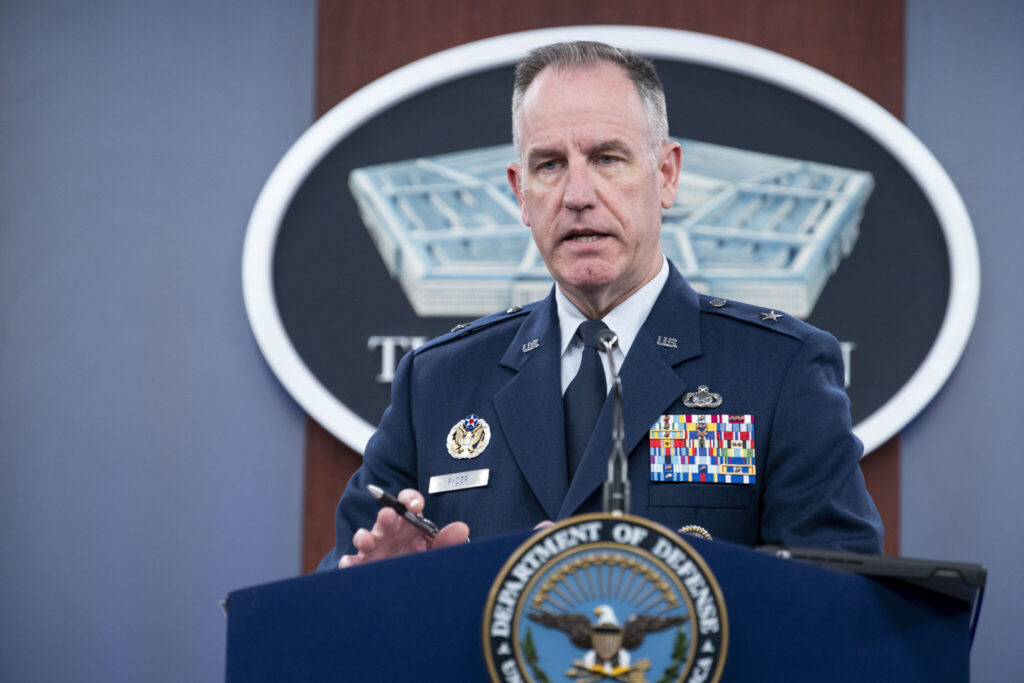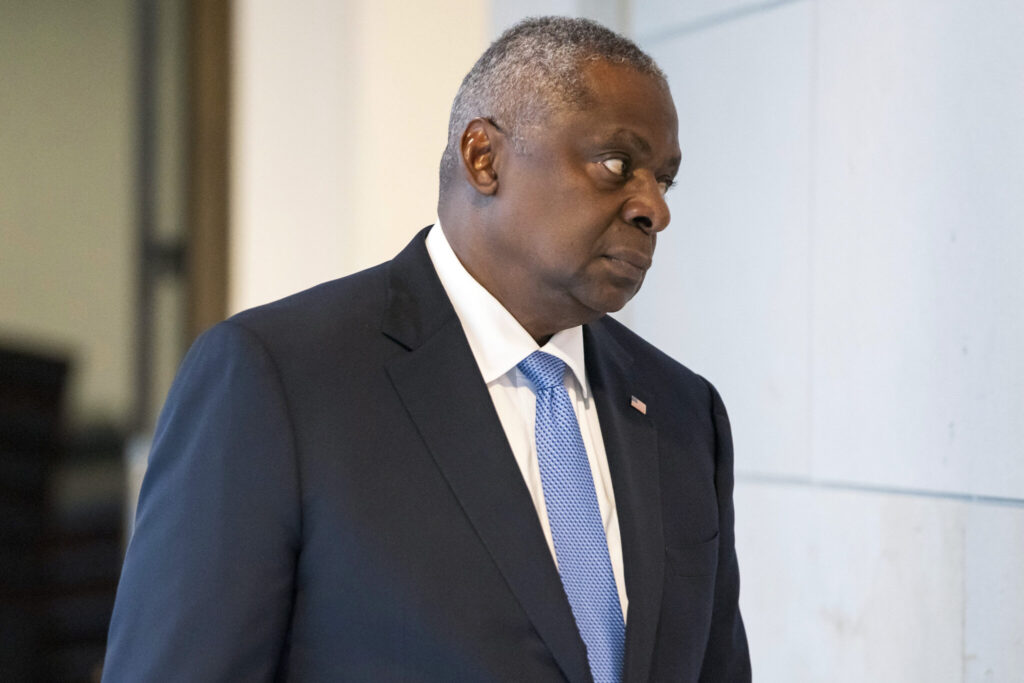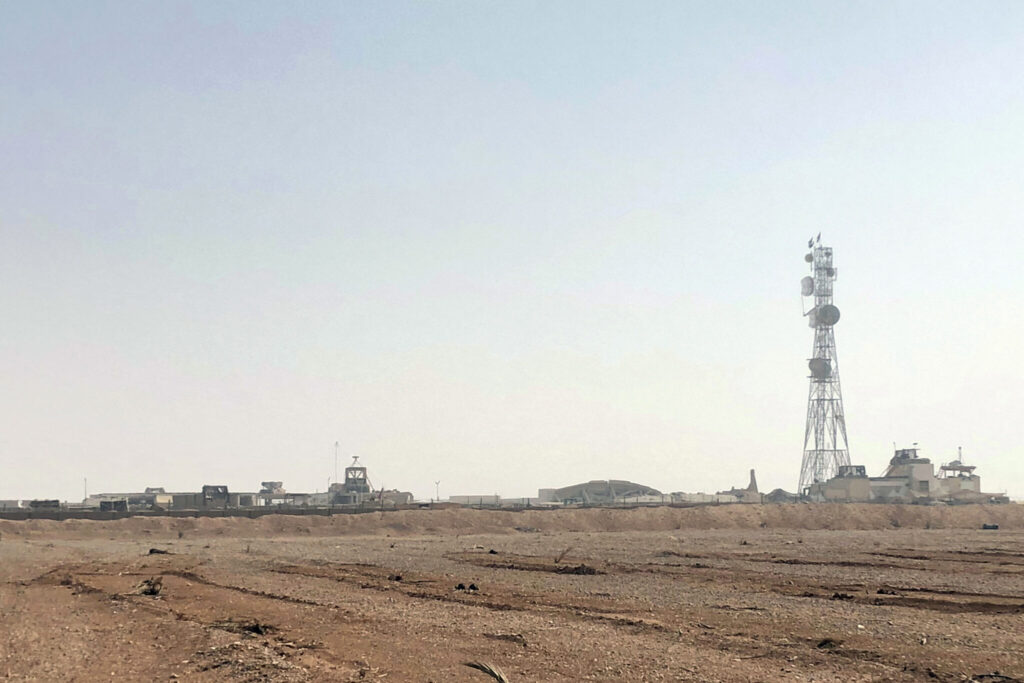Quick Read . To the Point.
- Pentagon confirms airstrikes on two eastern Syria sites linked to Iran’s Revolutionary Guard.
- Airstrikes are a response to drone and missile attacks on U.S. bases and personnel.
- Actions reflect the Biden administration’s commitment to protecting American interests.
- Since October 17, The U.S. faced 16 attacks in Iraq and Syria, injuring 21 service members.
- Defense Secretary Lloyd Austin emphasizes strikes are retaliation against Iranian-backed militias.
- U.S. actions are distinct from the Israel-Hamas conflict; however, Iran’s ties to Hamas are acknowledged.
- Injured U.S. personnel sustained minor injuries; one contractor died from cardiac arrest.
- U.S. warns of continued retaliation if Iranian-led attacks persist.
- U.S. and Israel deny involvement in Gaza hospital explosion.
- Pentagon strengthens Middle East air defenses, deploying missiles and approximately 900 troops.
Newslooks.com \ Washington
Early Friday, the Pentagon confirmed that the U.S. military conducted airstrikes on two sites in eastern Syria. These locations have connections to Iran’s Revolutionary Guard Corps. This robust response comes after a series of drone and missile attacks against U.S. bases and American personnel, which started last week.

These recent actions by the U.S. underscore the Biden administration’s commitment to safeguarding American interests. While the U.S. is keen on strongly retaliating against Iranian-backed factions believed to be behind the attacks, they are also treading cautiously to prevent the situation from escalating into a larger conflict in the region.
The specifics regarding the targeted locations remain undisclosed at this time.
The Pentagon detailed that, since October 17, U.S. bases and personnel have endured at least 12 attacks in Iraq and another four in Syria. Air Force Brig. Gen. Pat Ryder stated that 21 U.S. service members were injured in two incidents. These attacks used drones to target the al-Asad Airbase in Iraq and the al-Tanf Garrison in Syria.
In an official statement, Defense Secretary Lloyd Austin emphasized that these “precision self-defense strikes” are a direct response to the series of mostly unsuccessful attempts by Iranian-backed militia groups against U.S. personnel since October 17. Austin quoted President Joe Biden’s directive that these strikes were intended “to make clear that the United States will not tolerate such attacks and will defend itself, its personnel, and its interests.”
Austin also distinguished that the U.S. action is separate from Israel’s ongoing conflict with Hamas. Although the Biden administration hasn’t directly linked Iran to the Hamas attack on Israel on October 7, the longstanding support of Iran for Hamas is well-recognized.
Austin further conveyed that while the U.S. isn’t pursuing an extensive conflict, it will not hesitate to act if attacks by Iranian proxies persist.
Fortunately, all U.S. personnel injured in these attacks sustained only minor injuries and have since returned to their duties. However, a contractor tragically suffered a cardiac arrest and died during a potential drone strike.
This robust U.S. response was anticipated. The Pentagon and the White House officials had intimated that a U.S. retaliation was imminent. Reinforcing this stance, Ryder mentioned in a Pentagon briefing that the U.S. always reserves the right to defend its troops.

President Biden recently cautioned Ayatollah Ali Khamenei, Iran’s supreme leader, about repercussions if Tehran continues its aggressive maneuvers against U.S. forces.
The amplified aggression from Iranian-linked groups followed an explosion at a Gaza hospital, which prompted protests across various Muslim nations. While Israel has been conducting military operations in Gaza in response to a Hamas offensive, Israel and the U.S. have denied responsibility for the hospital explosion.
Consistently, U.S. officials have clarified that American retaliatory strikes are directly related to attacks on its troops and aren’t connected to the Israel-Hamas conflict.
This isn’t the first U.S. strike against Iranian interests in Syria. In March, U.S. forces targeted sites affiliated with Iran’s Revolutionary Guard in Syria after an attack resulted in the death of a U.S. contractor.
The primary aim of these U.S. counter-strikes is to serve as a deterrent against attacks on personnel actively combating the Islamic State group.
Though U.S. officials haven’t publicly linked the recent attacks in Syria and Iraq to the Gaza violence, Iran has criticized the U.S. for supplying arms to Israel, which have been used in Gaza, leading to civilian casualties.
In response to the escalating situation, the Pentagon has fortified air defenses in the region. Several batteries of Patriot missile systems, a Terminal High Altitude Area Defense (THAAD) battery, and extra fighter jets are being deployed. The defense systems are being dispatched from various U.S. forts, with approximately 900 troops being deployed or in the process of deployment to the Middle East.







